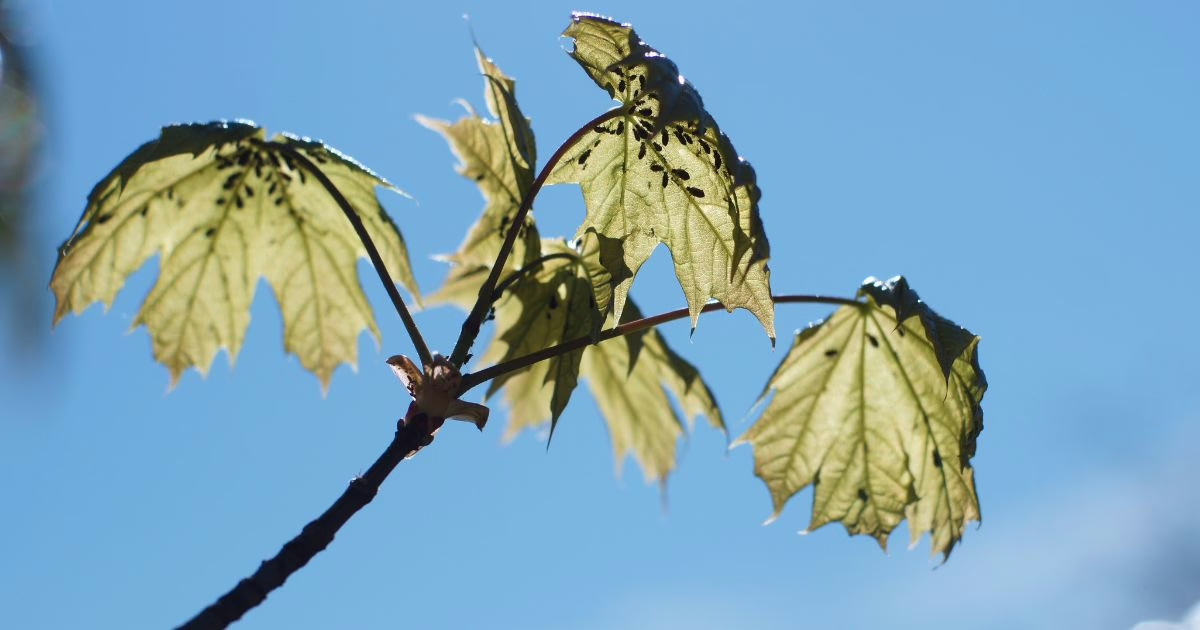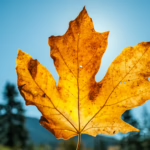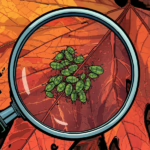How to Identify Aphids: Case Study on Maples in Durango, CO
Aphids are small, sap-feeding insects that quietly affect the health of trees. Their feeding can cause leaves to curl, yellow, or become distorted, while also producing a sticky substance called honeydew that encourages sooty mold growth, adding to the discoloration.
Over time, this can slow a maple’s growth, reduce its sap flow, and lead to dieback. With some careful observation, though, you can catch aphid activity early, distinguish their effects from drought or disease, and take steps to protect your tree before the damage deepens.
How to Spot Aphids on Your Maples
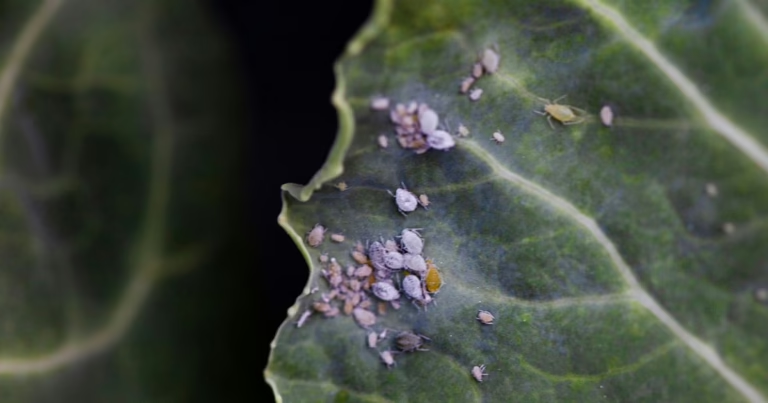
Populations of these small, soft-bodied insects— often clustered on new maple growth, like leaf undersides and tender shoots—typically surge from spring through summer. The most effective time to manage aphids is early spring, targeting them as nymphs emerge, and in late fall for species that lay overwintering eggs.
Visual Clues: Look for tiny pear-shaped insects in colors ranging from green to yellow or black. Aphids often cluster densely on the undersides of leaves or near tender new shoots.
Leaf Symptoms: Watch for leaves that curl, distort, or yellow. New growth may appear stunted or weak.
Honeydew & Sooty Mold: Check for a sticky, shiny residue on leaves and surrounding surfaces. This “honeydew” is aphid excrement that often fosters black sooty mold.
White Cast Skins: Aphids shed skins as they grow, leaving behind tiny white or translucent shells on leaves.
Ant Activity: Ants often “farm” aphids for their honeydew, so increased ant presence may hint at aphid infestations.
Drought, Disease, or Aphids— What’s Hurting Your Maple?
Distinguishing aphid damage from drought stress or disease can be tricky. Here’re the signs to watch for:
| Symptom/Sign | Drought Stress | Disease | Aphids |
|---|---|---|---|
| Leaf Color | Wilting, browning at edges | Spots, lesions, or discoloration | Yellowing, curling, distortion |
| Leaf Drop | Often widespread, dry leaves drop | Patchy or irregular leaf loss | Localized distortion, often no premature drop |
| Surface Residue | Dry, no sticky substances | Fungal growth or cankers on bark | Sticky honeydew, sooty mold |
| Visible Insects | None | None or fungal spores | Clusters of small bugs visible |
| Ant Presence | None | None | Common near aphids |
How to Catch Aphids Early and Protect Your Maples
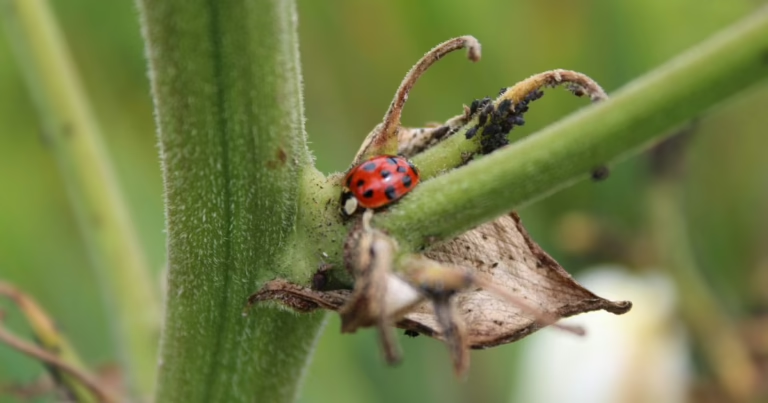
Regular Inspections: Especially during spring and early summer, make it a habit to inspect your maples weekly. Use a magnifying glass to check beneath leaves and shoot tips.
- Preventative Treatments: Schedule treatments with an ISA-Certified Arborist in fall and early spring. The spray Azasol (OMRI organic-approved) targets aphid eggs or emerging nymphs to prevent summer infestations.
Look for Ants: Their presence tending to leaves can be a warning sign.
Act Quickly: Small infestations can be managed with gentle insecticidal soaps or natural predators like ladybugs. Larger problems may require professional advice.
Know the Clues!
In Durango’s semi‑arid climate, periodic drought can blur the line between drought stress and aphid injury. When soil moisture runs low, maples lose some of their natural defenses, giving aphids an opening. By learning the visual cues of aphid activity, separating them from signs of disease or dry conditions, and inspecting trees regularly, you can intervene before decline sets in. Timely, targeted action keeps maples strong and their foliage intact season after season.

